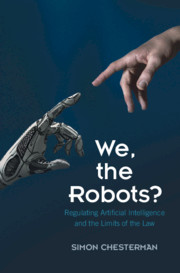Introduction
Published online by Cambridge University Press: 15 July 2021
Summary
Though worries about the impact of new technology have accompanied many inventions, AI is unusual in that some of the starkest recent warnings have come from those most knowledgeable about the field. Many of these concerns are linked to ‘general’ or ‘strong’ AI, meaning the creation of a system that is capable of performing any intellectual task that a human could – and raising complex questions about the nature of consciousness and self-awareness in a non-biological entity. The possibility that such an entity might put its own priorities above those of humans is non-trivial, but this book focuses on the more immediate challenges raised by ‘narrow’ AI – meaning systems that can apply cognitive functions to specific tasks typically undertaken by a human. The book is organized around the following sets of problems: How should we understand the challenges to regulation posed by the technologies loosely described here as ‘AI systems’? What regulatory tools exist to deal with those challenges and what are their limitations? And what more is needed – rules, institutions, actors – to enable us to reap the benefits offered by AI while minimizing avoidable harm?
Keywords
- Type
- Chapter
- Information
- We, the Robots?Regulating Artificial Intelligence and the Limits of the Law, pp. 1 - 12Publisher: Cambridge University PressPrint publication year: 2021

